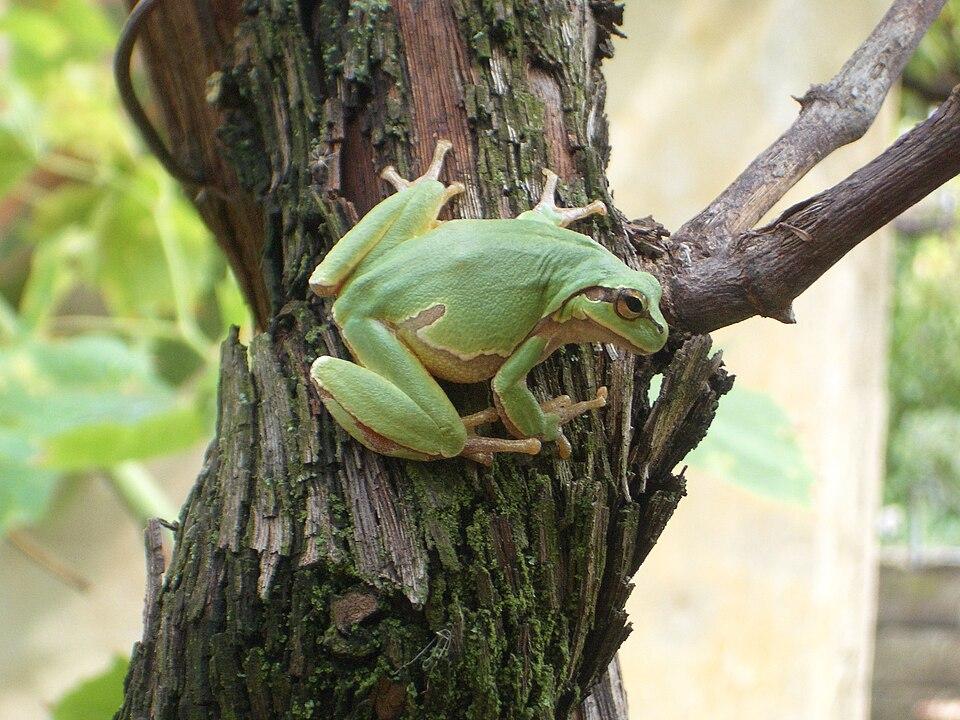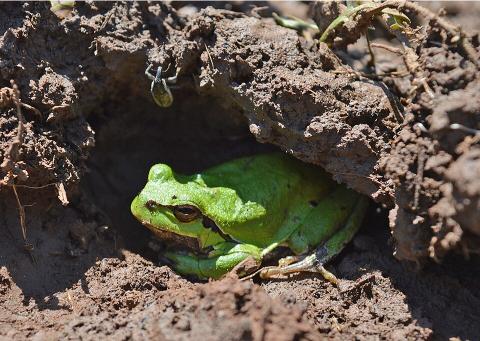
Timelines 10
Man and his Senses 10
Man and his Inventions 10
Geography 10
Fauna 10
Timelines 10
Man and his Senses 10
Man and his Inventions 10
Geography 10
Fauna 10

By the end of the twentieth century amphibians had quietly become both harbingers and historians of environmental change. Small, moisture-dependent and given to sudden local disappearance, frogs tell us where water has been altered, where pollutants have crept in, and where a landscape has ceased to provide the tiny microhabitats that sustain extraordinary levels of endemism. That double status — as biological oddity and ecological alarm bell — links two very different geographies: the wet meadows and pond networks of the Czech Republic and the cloud-kissed shola and tea-covered hills of India’s Western Ghats. Recent scientific work and conservation projects show how modern genetics and community conservation together respond to the same question: what do frogs tell us about the health of place and the work we must do to preserve it.
An unusual reproductive pattern in waters of the Czech Republic
In central Europe, recent work by laboratories in the Czech Republic has prompted a reappraisal of how some frog lineages persist. In the Poodří wetlands of the Odra basin researchers have for decades recorded a curious population of so-called edible or green frogs (a hybrid lineage known as Pelophylax esculentus) in which only males are present. These males nevertheless reproduce by using the eggs of nearby marsh frog females; they mate, fertilize the eggs, and effectively eliminate the mother’s genome so that offspring inherit a single parental genome, a process called hybridogenesis. Field monitoring, cytogenetic methods and whole-genome in situ hybridisation have confirmed comparable behaviour in other hybrid taxa such as Graf’s hybrid frog (Pelophylax grafi) and shown that hybridogenetic lines can persist for hundreds or thousands of years. This work underscores that amphibians still hold evolutionary experiments, part asexual and part sexual, that can only be revealed by careful genetic study.
Why this matters is twofold. First, hybridogenesis alters how populations respond to disturbance: a largely clonal inheritance pattern constrains genetic mixing and may change resilience to disease or habitat change. Second, the Poodří story is a reminder that conservation cannot rely on simple assumptions about what a species is. What looks like an ordinary marsh community may hide complex evolutionary histories that matter for management and legal protection.
The tree frog between global status and local decline
If hybrid frogs emphasise evolutionary idiosyncrasy, the European tree frog (Hyla arborea) illustrates another conservation tension, a species with a broad global range but local fragility. As conventionally defined, Hyla arborea occurs across much of Europe; adults are small, arboreal and characteristically green with a dark lateral stripe. Global assessments presently list the species with a relatively reassuring global status, yet regional assessments tell a different story. Regional assessments for the Netherlands and Belgium record an “unfavourable to inadequate” conservation status in much of the species’ EU range. Fragmentation of breeding wetlands, loss of newly formed ponds and changing land use have left formerly continuous distributions fractured and local populations vulnerable. In short, a species can be globally common and regionally imperilled, a mismatch that requires local surveys and targeted habitat work if recovery is to be meaningful.
Western Ghats and Munnar: A hotspot under pressure
South and east of Europe, the Western Ghats of peninsular India tell a different but equally urgent story. Munnar and the surrounding highlands in Kerala are part of a recognized biodiversity hotspot whose amphibian fauna is both astonishing and poorly known. Dozens of species have been described here in the last two decades, and many more are suspected to remain undiscovered. That same richness is precisely what makes the region fragile. Rapid growth in tourism infrastructure — roads, resorts and homestays — together with plantation expansion, eucalyptus and wattle encroachment, and the risk of heavier monsoon rains and landslides, have reduced forest cover and carved up the microhabitats upon which endemic frogs depend. Satellite analysis and field reports document significant tree cover loss around Munnar and a steady erosion of shola fragments that serve as breeding and foraging sites for high elevation species.
Conservation in practice: The Munnar amphibian recovery model
Responding to this decline, a conservation project in Munnar exemplifies practical conservation: targeted surveys, habitat protection and restoration, pond creation, disease monitoring and community partnerships. The project works with local forest and wildlife authorities and with funders and partners to identify critically endangered local species and secure sites that still harbour remnant populations. Field teams are combining standard herpetological survey methods with outreach to tea estate managers and local communities, and are building a pragmatic conservation architecture around small wetlands and shola patches — the precise microhabitats that many endemic frogs require. These on-the-ground measures are the logical complement to taxonomic and genetic work: without secure habitat, even populations of remarkable evolutionary interest cannot survive.
Citizen science and knowledge commons
Where formal projects begin, public engagement must continue. An online portal maintained by researchers and volunteers provides species accounts, photographs, distribution notes and a place for sightings to be recorded and verified. Such platforms shorten the distance between field notes and conservation action: local watchers feed occurrence data into mapping efforts, help spot declines, and become allies in creating small-scale reserves or convincing estate owners to retain breeding ponds. In regions like the Western Ghats where many species are highly range-restricted, a single verified locality can alter conservation priorities; citizen science thus becomes an indispensable supplement to institutional surveys.
Across these accounts — work from the Czech Republic, regional assessments in the Netherlands and Belgium, and Indian field reports and recovery projects — a single lesson recurs. Frogs are both engineers of ecosystem function and early indicators of its loss: they consume billions of insects, support food webs, and react quickly to pollution, habitat fragmentation and climate perturbation. Their small size and complex life cycles make them sensitive to changes that larger mammals can temporarily absorb. That sensitivity makes them fragile, yes, but it also makes them useful. Where frogs decline, the scale and causes of environmental change are often legible; where they persist, targeted habitat recovery and community stewardship are proving effective.
Conservation does not wear a single uniform face. In the Czech Republic it is molecular cytogenetics and long-term monitoring that reveal curious reproductive strategies and teach us how populations persist; in Munnar it is habitat restoration, community partnership and rapid surveys that seek to halt declines driven by roads and resorts. Both approaches are necessary. Genetic insight refines our understanding of what to protect; field action secures the places where those lineages live. If we are to sustain amphibian diversity — from Poodří meadows to Munnar sholas — scientific curiosity and practical conservation must travel together, and local knowledge systems and online citizen portals must be amplified, not silenced. The frogs have been talking; we ignore them at our peril. management and legal protection.
Sources
https://tinyurl.com/252vnn8r
https://tinyurl.com/22oc3nl2
https://tinyurl.com/2afllbfq
https://tinyurl.com/248a7rdz
https://tinyurl.com/2cc6b6nh
https://tinyurl.com/2hfc2v7u
https://tinyurl.com/2dhmyywy
https://tinyurl.com/234275ke